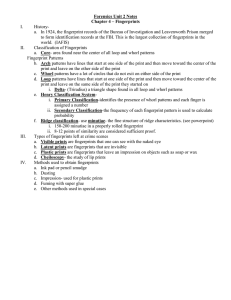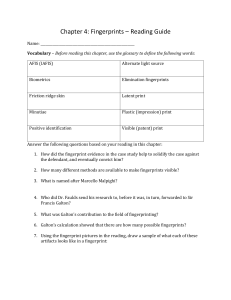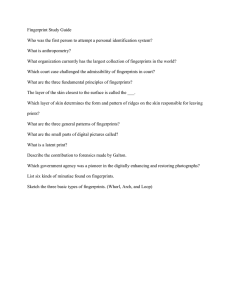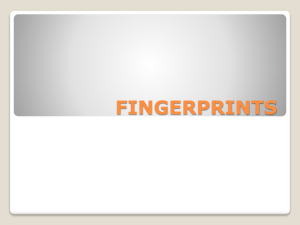Forensic Science Test Review for Chapter 4 What is the importance
advertisement
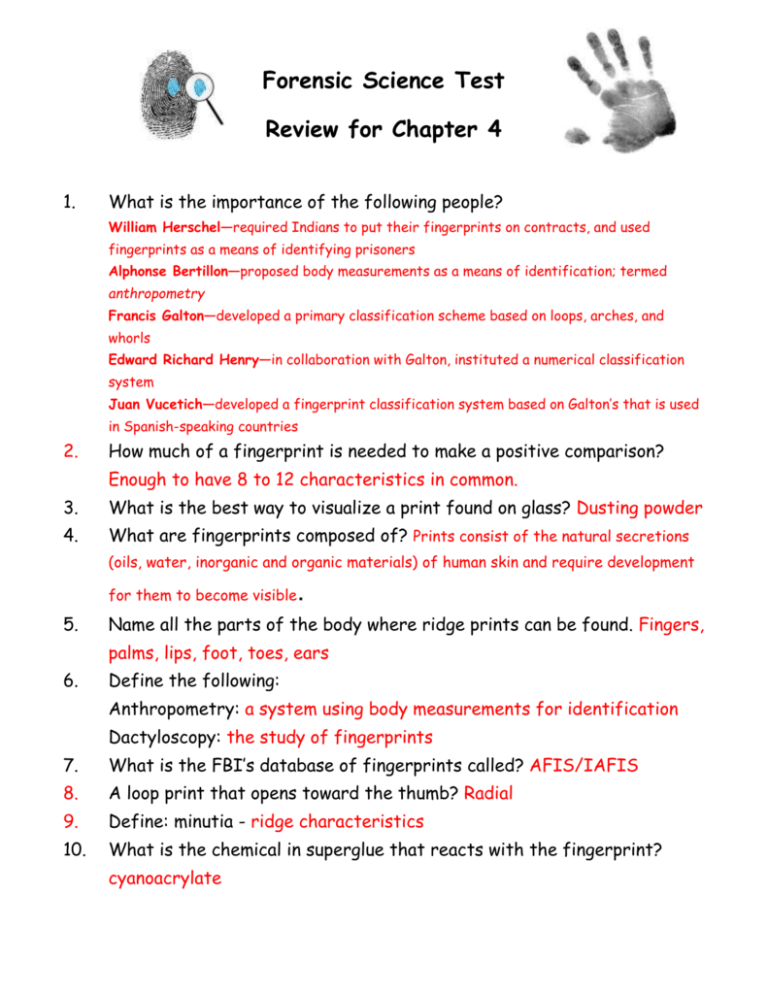
Forensic Science Test Review for Chapter 4 1. What is the importance of the following people? William Herschel—required Indians to put their fingerprints on contracts, and used fingerprints as a means of identifying prisoners Alphonse Bertillon—proposed body measurements as a means of identification; termed anthropometry Francis Galton—developed a primary classification scheme based on loops, arches, and whorls Edward Richard Henry—in collaboration with Galton, instituted a numerical classification system Juan Vucetich—developed a fingerprint classification system based on Galton’s that is used in Spanish-speaking countries 2. How much of a fingerprint is needed to make a positive comparison? Enough to have 8 to 12 characteristics in common. 3. What is the best way to visualize a print found on glass? Dusting powder 4. What are fingerprints composed of? Prints consist of the natural secretions (oils, water, inorganic and organic materials) of human skin and require development for them to become visible 5. . Name all the parts of the body where ridge prints can be found. Fingers, palms, lips, foot, toes, ears 6. Define the following: Anthropometry: a system using body measurements for identification Dactyloscopy: the study of fingerprints 7. What is the FBI’s database of fingerprints called? AFIS/IAFIS 8. A loop print that opens toward the thumb? Radial 9. Define: minutia - ridge characteristics 10. What is the chemical in superglue that reacts with the fingerprint? cyanoacrylate 11. What determines how a print is developed? The type of print it is, the type of surface it’s on, the color of the surface it’s on 12. The three basic types of prints are: whorl, arch, and loop Describe the three basic prints: An arch has friction ridges that enter on one side of the finger and cross to the other side while rising upward in the middle. They do NOT have type lines, deltas, or cores. A loop must have one or more ridges entering and exiting from the same side. Loops must have one delta. A plain or central pocket whorl has at least one ridge that makes a complete circuit. A double loop is made of two loops. An accidental is a pattern not covered by other categories. Whorls have at least two deltas and a core. 13. Describe some major parts of the fingerprint patterns. Ex. Delta. 14. When did dactyloscopy begin? 19th century in India with William Herschel 1877 15. What does silver nitrate react with? Chloride to form silver chloride, a material that turns gray when exposed to light.

